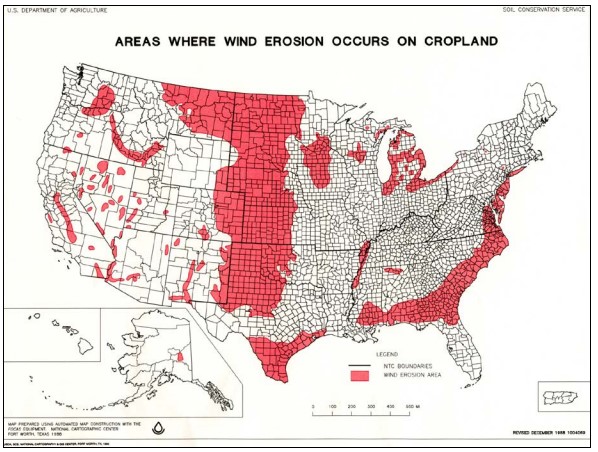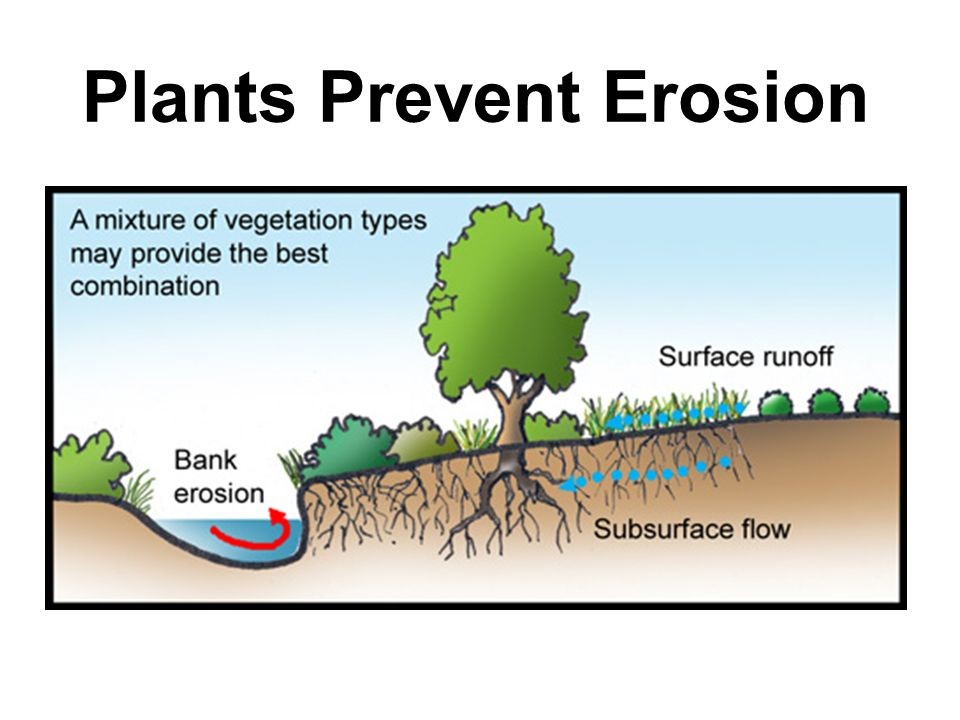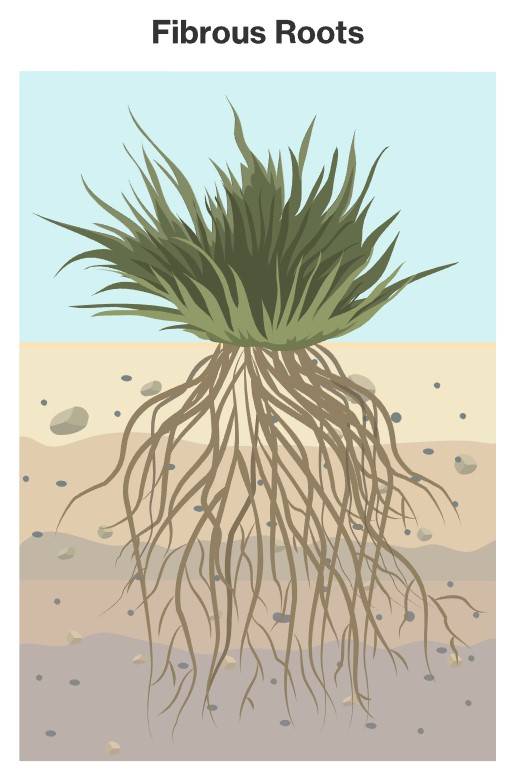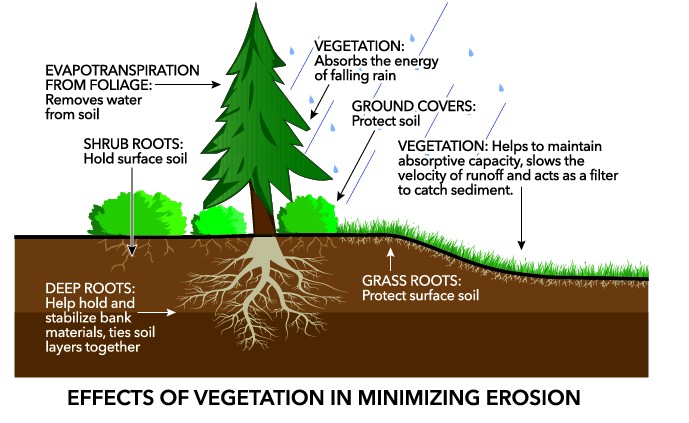Did you know water and wind are responsible for about 84 percent of degraded and eroded land?
Erosion is a natural phenomenon, but since it causes damage to vegetation, landscapes, agriculture, and property, it’s considered a serious environmental issue. The degraded land that’s left in the wake of long-term erosion can make formerly vibrant areas look more like a wasteland.
The good news is that erosion can be slowed or controlled entirely by using natural solutions such as plants.
In this article, we’ll briefly explore the basics of erosion control, then talk about some plants that can help with the process. Let’s dive in!
Understanding Erosion Control
Erosion is a natural process where soil and its nutrients get displaced. There are three major causes of erosion, which are:
- Strong winds
- Heavy water flow
- Human activity
Strong winds and massive water flows, like heavy rains or landslides, cause soil erosion by removing the topsoil. Intensive agriculture, deforestation, road building, climate change, and urban development are substantial human activities that cause or contribute to erosion.
There are 75 million acres of land in the United States, and 5 million acres are severely damaged due to wind, water, and human activity each year.
With such widespread damage, it’s natural that we should look for a sustainable solution to help prevent erosion. That’s why plants are such an ingenious solution.
Plants For Erosion Control
Plants often bind soil together with their root systems, which means they’re able to serve as a protective layer that can help prevent soil erosion in several ways.
For example, firm plant placement in the ground helps slow water flow since the stems act as thick barriers. The plant’s roots also hold the soil in position, which makes it harder to wash away accidentally. The soil is also protected from direct rainfall, as plants help break in the impact of raindrops before they hit the ground. This helps prevent soil runoff.
There are a few types of plants that are especially beneficial when it comes to erosion control. The best part is that although these erosion control plants serve a great purpose, they’re also aesthetically pleasing and are sure to help complete any landscape.
Groundcovers
“Groundcovers” is an umbrella term for plants that are low-lying, spreading, and leafy. They spread across the ground very quickly, and are also commonly known as “creeping” plants.
These types of plants help prevent erosion because their spreading roots hold soil in place. Strong roots make it more difficult for the ground to erode, which helps ensure a lively and healthy environment.
Some popular species include:
- Ivy
- Pachysandra
- Salvia
- Alfalfa
- Clover
- Mint
- Lilyturf
- Japanese honeysuckle
Depending on the species, ground-covering plants might blossom vibrant flowers, making for a beautiful garden. They’re prevalent in covering bare spots in lawns too — so it’s like two birds with one stone!
Shrubs
Shrubs are lush, full plants with several woody stems above the ground. Also called bushes, they are small- to medium-size perennials that share common characteristics with trees, but their stem families and short height distinguish them.
Popular shrub species include:
- Buckwheat
- Lavender
- Honeysuckle
- Magnolia
- Hydrangea
Shrubs are generally hardy plants that help deter foot traffic, further helping prevent man-made erosion. Thanks to their strong roots and thick blooming, shrubs are an excellent choice for protecting surrounding soil from harsh wind, sun, and downpours. You’ll often find shrubs lined up against homes and foundations as an aesthetic.
Grass
Grass is found almost everywhere. It’s used on lawns, golf courses, athletic fields, gardens, and even for erosion control. Although it might not seem obvious, grass is one of the best choices for erosion control because its fibrous roots spread deep and quickly, holding soil very well.
When choosing grass for erosion prevention, it’s best to go with “native” species of grass since they are maintainable and only require occasional mowing. It’s hard to argue with low-maintenance grass!
Some common grass species are:
- Kentucky Bluegrass
- Tall Fescue
- Hybrid Bermuda
- Perennial Ryegrass
- Creeping Red Fescue
- St. Augustine
- Purple Threeawn
Some grasses are also ideal for slopes susceptible to water erosion. For example, the Purple Threeawn has a dense root system that holds soil in place. Because of this, you’ve likely seen it installed on the side of sloping hills on interstates.
Trees
A tree is a woody perennial plant with a single stem or trunk growing to be several feet tall. They bear lateral branches that are usually several feet off the ground.
Since trees are high off the ground, it might be hard to imagine how they’d be helpful for soil erosion control. The answer is in the roots, which help stabilize the soil and hold the layers together. Their branches also help catch heavy rain, which could damage low-lying plants and loose soil.
Certain species are capable of keeping steady on a slope or high-traffic area, which helps with soil erosion. Ideal tree species for downslope erosion control include:
- Cascara
- Fir
- Pine
- Willow
- Big-Leaf Maple
- Western Red Cedar
Conclusion
Erosion is responsible for damaging millions of acres of land each year. Strong winds, heavy water, and the human footprint all play major roles in land degradation — but that doesn’t mean it can’t be stopped.
Plants like groundcovers, shrubs, grass, and trees are natural solutions that help prevent erosion. Thanks to their extensive root systems and protective layers, healthy soil can stay in place with less runoff.
If you have a steep slope or are experiencing soil damage due to high wind and water, Granite Seed has a wide variety of plants that help prevent erosion.



